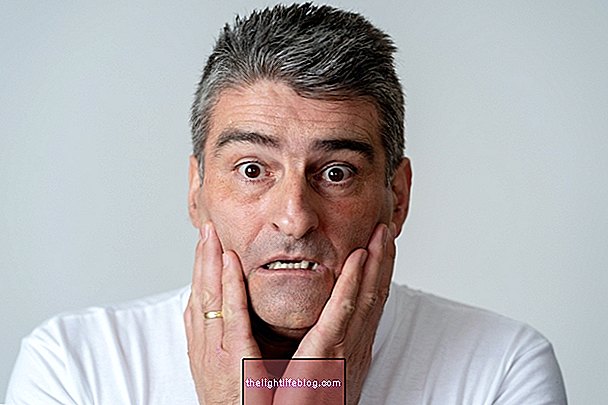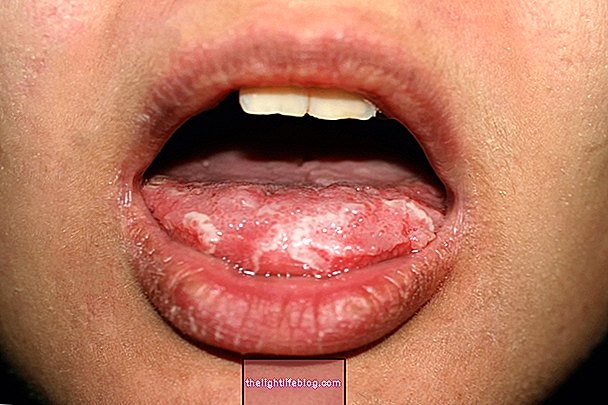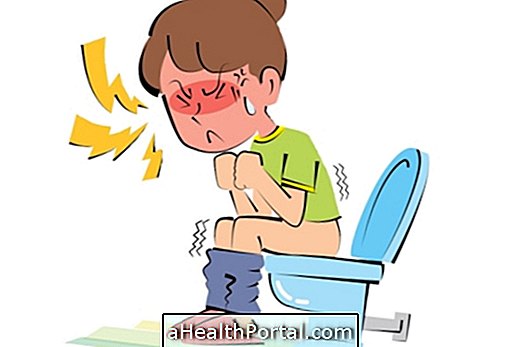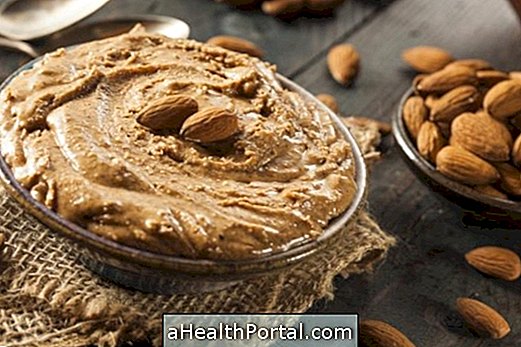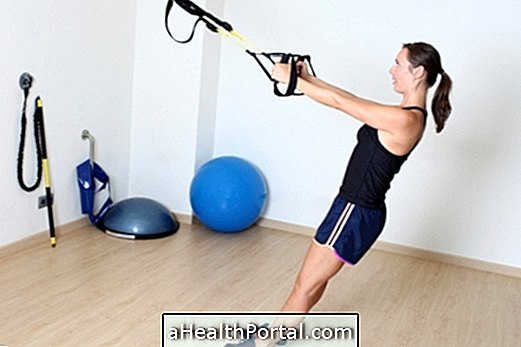Postural drainage is a technique that serves to eliminate phlegm from the lung through the action of gravity, being useful mainly in diseases with a large amount of secretion, such as cystic fibrosis, bronchiectasis, pneumopathy or atelectasis. But it can also be used at home to help eliminate phlegm from the lungs in case of flu or bronchitis.
Using the modified postural drainage it is possible to use this same strategy to remove excess fluids in any part of the body, in the legs, feet, arms, hands, and even in the genital region, according to the person's need.
What is it for
Postural drainage is indicated whenever it is necessary to move body fluids. Thus, it is particularly indicated to help eliminate respiratory secretions present in the lung, but by the same principle it can also be used to deflate any other area of the body.
How to do postural drainage

If you want to eliminate lung secretions, you should lie on your stomach up, down or on your side, on an inclined ramp, keeping your head lower than the rest of your body. The physiotherapist may also use the tapping technique to achieve better results in the elimination of respiratory secretions.
The inclination can be between 15-30 degrees but there is no predetermined time to remain in the drainage position, so it is up to the physiotherapist to decide how much time he thinks is necessary for each situation. It may be indicated to remain only 2 minutes in the postural drainage position when treatments such as vibrocompression, for example, are associated, while it may be indicated to remain in the position for 15 minutes. Postural drainage can be done 3-4 times a day or at the discretion of the physiotherapist, whenever necessary.
To perform postural drainage, you must follow the principle that the swollen part must be higher than the height of the heart. Thus, if you want to deflate your feet, you should lie on your back, with your leg higher than the rest of your body. If you want to detach your hand, you should keep your entire arm higher than the rest of your body. In addition, to further facilitate venous return, lymphatic drainage can be performed while in the postural drainage position.
Contraindications
Postural drainage cannot be performed when any of the following situations exist:
- Head or neck injury;
- Intracranial pressure> 20 mmHg;
- Recent spinal surgery;
- Acute spinal cord injury;
- Pulmonary edema with congestive heart failure;
- Hemoptysis;
- Bronchopleural fistula;
- Rib fracture;
- Pulmonary embolism;
- Pleural effusion;
- Difficulty in staying in this position, due to some discomfort.
In these cases, postural drainage can be harmful to the health of the individual, making breathing difficult, increasing heart rate or causing an increase in intracranial pressure.
Warning signs
You should seek medical help if you experience the following symptoms: shortness of breath, difficulty breathing, mental confusion, bluish skin, coughing up blood or chest pain.
Was this information helpful?
Yes No
Your opinion is important! Write here how we can improve our text:
Any questions? Click here to be answered.
Email in which you want to receive a reply:
Check the confirmation email we sent you.
Your name:
Reason for visit:
--- Choose your reason --- DiseaseLive betterHelp another personGain knowledge
Are you a health professional?
NoMedicalPharmaceuticalsNurseNutritionistBiomedicalPhysiotherapistBeauticianOther
Bibliography
- IKE, Daniela et al. Postural Drainage: practice and evidence. Movement Physiotherapy. 12-15, 2009


